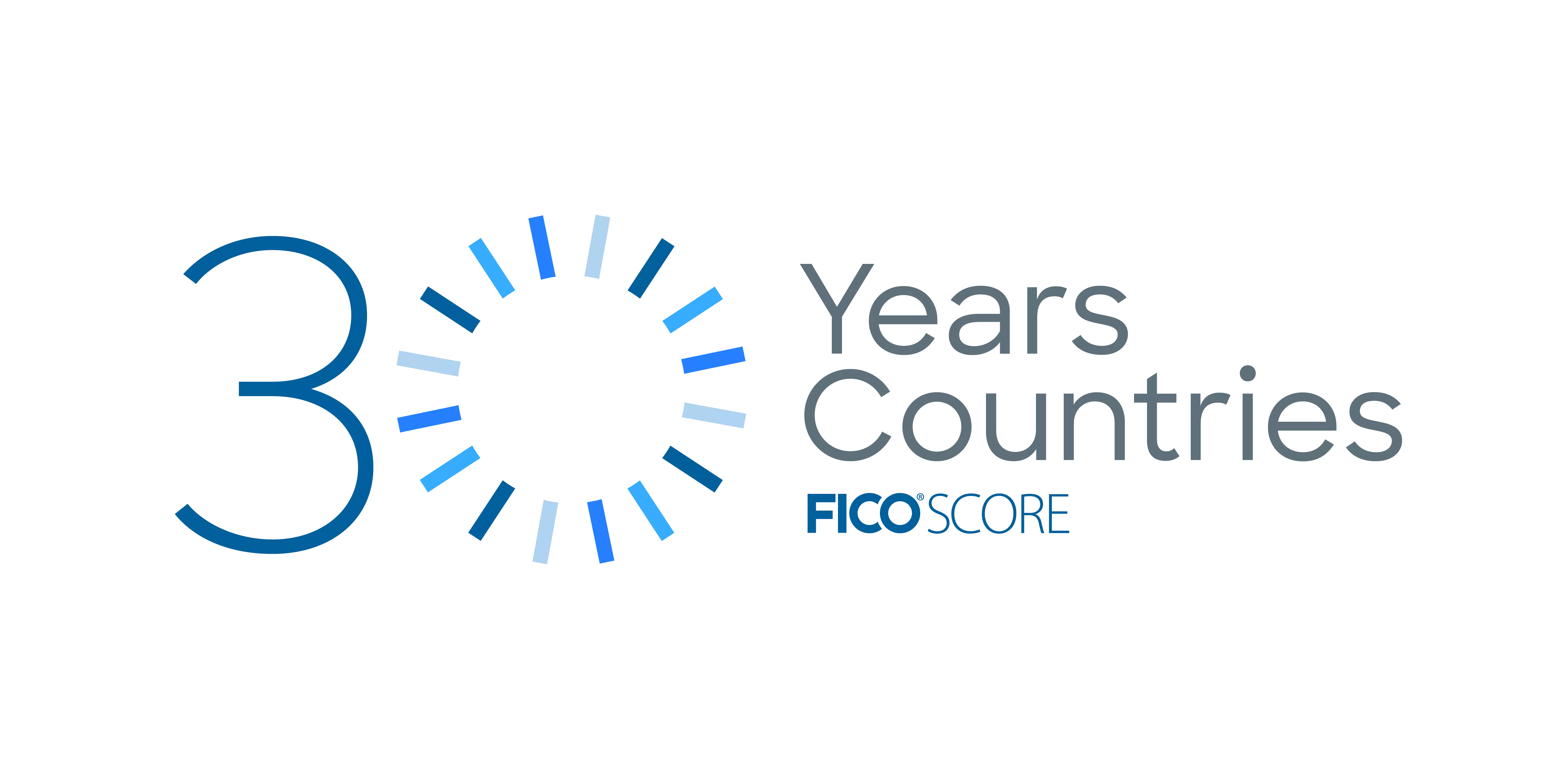FICO Celebrates 30th Anniversary of the FICO Score
Spotlighting global financial inclusion innovation at 2019 FICO World

When I was recruited to join FICO right after school in the late ‘80’s, I couldn’t imagine that I would be here years later talking about the 30th anniversary of the FICO® Score. Particularly its impact on the global economy, which I am excited to highlight during my keynote next month at FICO World. But I am so proud to be a part of the team that made the FICO® Score the trusted industry standard for helping lenders open the door to credit access and mainstream financial services for consumers in the U.S.
To appreciate how important the FICO® Score is today, you have to understand what the world was like before the FICO® Score was introduced and widely adopted. In the U.S., larger lenders had been using credit scoring for some time, but there were still many smaller lenders who were using credit scoring for the first time. It wasn’t unusual to hear from the head of credit risk of a bank that the bank “didn’t book bad loans.” In reality, that meant that the bank was missing out on opportunities for growth, and for many consumers it meant they weren’t able to access credit very easily.
Early on, the FICO® Score was designed to democratize credit, empowering lenders of all sizes, not just the big players, to appropriately measure risk and offer credit to a wider number of consumers. The FICO® Score took human judgment and biases out of the system. And from a regulatory perspective, lenders knew that using the FICO® Score was a way to ensure prohibited biases were not considered in their credit decisions.
We launched the FICO® Score in 1989 as a universal and impartial tool for evaluating credit risk and in 1991 it became available from all three major U.S. credit reporting agencies. We weren’t the first or only scoring option available at all three major credit bureaus, but we were the first with a common design blueprint. This was not only innovative at the time, but it allowed lenders to have the confidence that they could use the score, regardless of which bureau it came from. That consistency created trust.
One of the ways we gained early traction with lenders is not widely known. We sent magnifying glasses to the top 20-30 lenders and asked them to test the FICO® Score on their portfolios using retrospective analysis to see what improvements could have been made using our score instead. We offered to pay for the test if we lost. I’m happy to say that a year later, nearly all of them tested and we didn’t pay for a single test.
One outcome of the growing acceptance of the FICO® Score in lending was that consumers became more aware of us. And they had questions, and sometimes misconceptions as well. We created educational material for consumers and consumer advocacy groups, including videos to explain the concepts behind the FICO® Score and help demystify it. In 2001, we launched MyFICO.com to give consumers access to their FICO® Scores, empowering them to manage and improve their credit.
The FICO® Score has not been static all of these years. Innovation has always been at the core of the FICO® Score. At the very beginning, the hard work to understand the data and create the models were key reasons why the FICO® Score became so successful. In the last decade, we announced FICO® Score 9, which eased the impact of medical debt, as well as alternative data products, such as FICO® Score XD, designed to expand access to credit for consumers with little credit history. By having FICO® Scores available for more people, we are furthering our goal of enabling greater financial inclusion.
Another way we’ve been on the forefront of financial inclusion is bringing FICO scoring to other countries. We now reach 30 countries, with coverage to provide a path to traditional credit for over 1 Billion of the consumers worldwide who are unbanked or have no historical credit. As we expanded into developing countries, the FICO® Score evolved to meet the needs of those economies where credit doesn't exist in the same way as the U.S. For example, the FICO® Scores for India, Latin America and Africa.
Throughout the world, we’ve leveraged alternative data, such as telco, GSM, purchase, loyalty, and other financial and behavior data, to let more people into the credit world. Our core goal is the same as it was 30 years ago – to make credit more fair and accessible.
When I started at FICO, I was energized by the passion of the people and organization, driven by the fact that we were democratizing credit access in the U.S. Now, I’m still excited to be part of a passionate team, driven to make credit more available to the U.S. and the rest of the world. The belief that we are empowering people and economies keeps me charged at FICO every day. Happy 30th anniversary FICO® Score and to the team that makes it possible! I am excited to further tout the innovation during my keynote at the 2019 FICO World on Nov 7th.
For more details on the 30th anniversary of the FICO® Score, click here!

Popular Posts

Business and IT Alignment is Critical to Your AI Success
These are the five pillars that can unite business and IT goals and convert artificial intelligence into measurable value — fast
Read more
FICO® Score 10T Decisively Beats VantageScore 4.0 on Predictability
An analysis by FICO data scientists has found that FICO Score 10T significantly outperforms VantageScore 4.0 in mortgage origination predictive power.
Read more
Average U.S. FICO Score at 717 as More Consumers Face Financial Headwinds
Outlier or Start of a New Credit Score Trend?
Read moreTake the next step
Connect with FICO for answers to all your product and solution questions. Interested in becoming a business partner? Contact us to learn more. We look forward to hearing from you.
